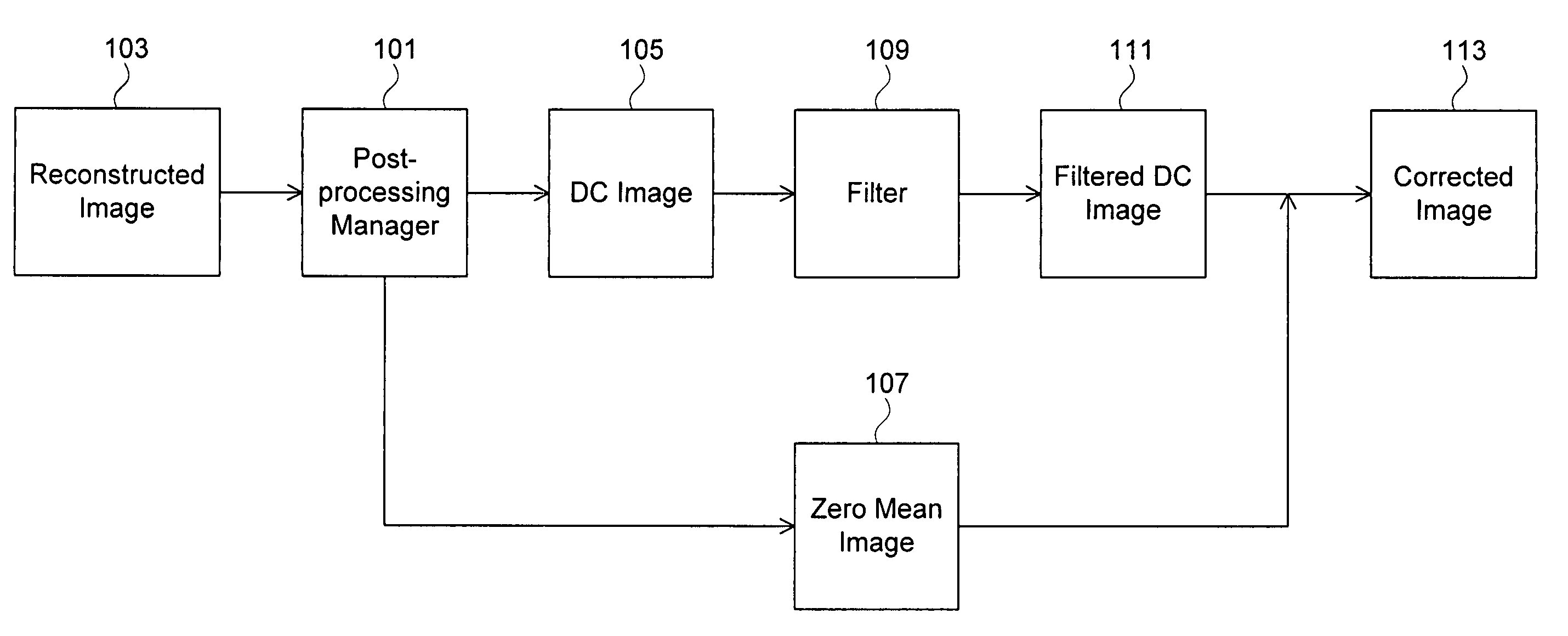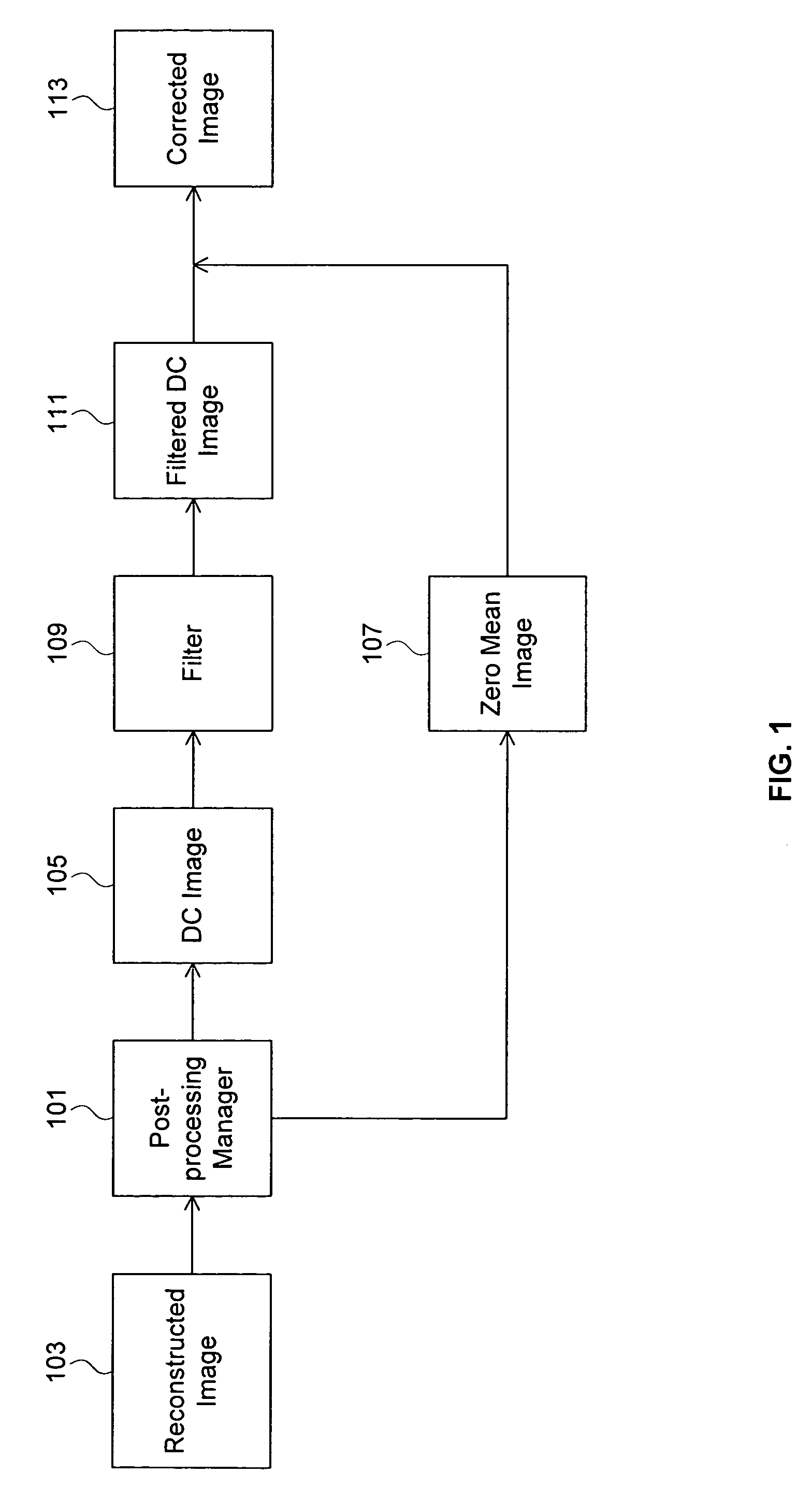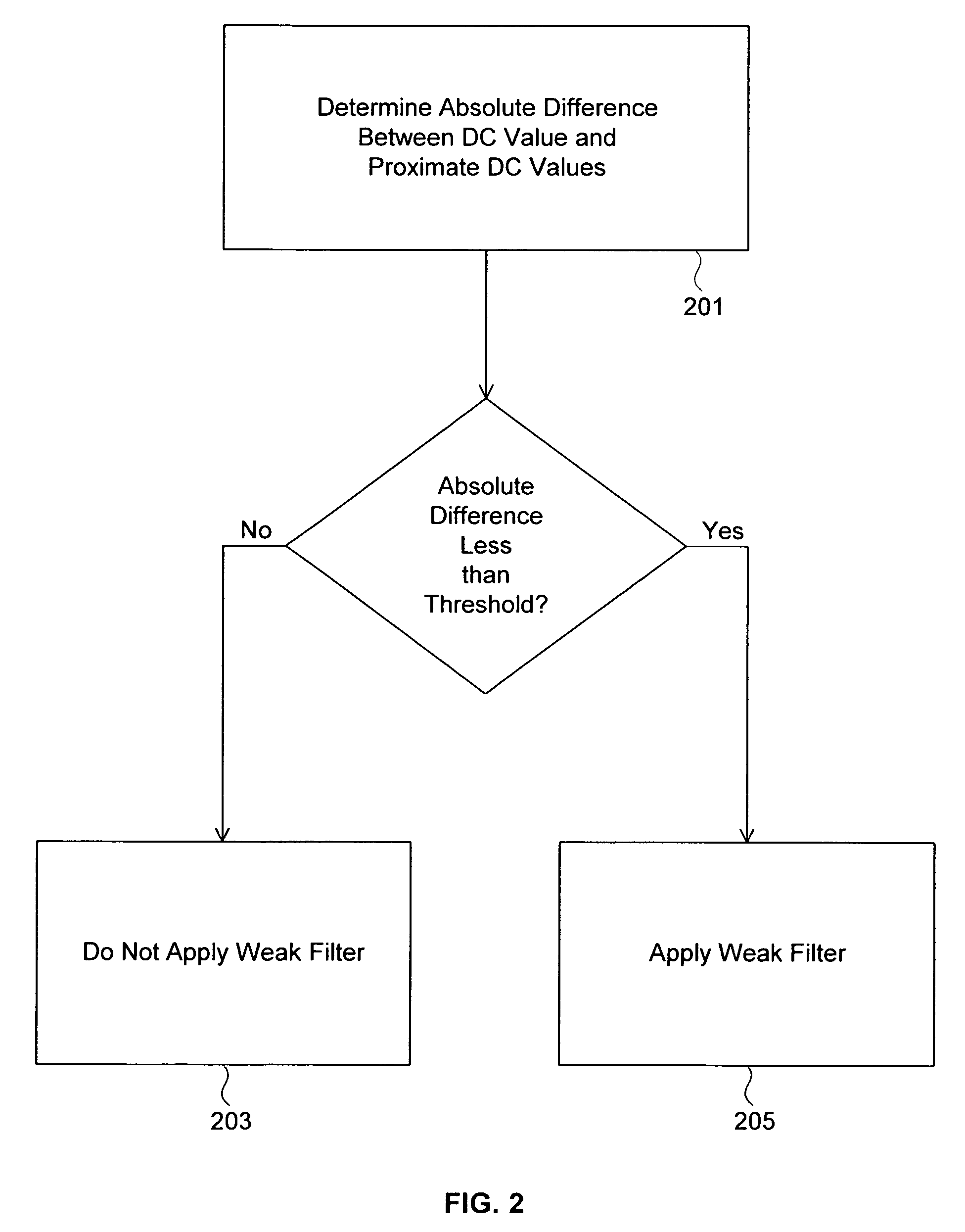Reducing undesirable block based image processing artifacts by DC image filtering
a filtering and image technology, applied in the field of block based image processing, can solve the problems of pixel domain processing computationally expensive, edgy luminance transitions, and annoying blocking artifacts, and achieve the effect of smooth luminance transitions and reduced blocking artifacts
- Summary
- Abstract
- Description
- Claims
- Application Information
AI Technical Summary
Benefits of technology
Problems solved by technology
Method used
Image
Examples
Embodiment Construction
[0017]FIG. 1 illustrates a high level overview of post-processing reconstructed pictures in order to reduce compression artifacts, according to some embodiments of the present invention. A post-processing manager 101 divides a reconstructed image 103 that was encoded using block based processing into non-overlapping blocks (non-overlapping blocks not illustrated in FIG. 1).
[0018]It is to be understood that although the post-processing manager 101 is illustrated as a single entity, as the term is used herein a post-processing manager 101 refers to a collection of functionalities which can be implemented as software, hardware, firmware or any combination of the three. Where a post-processing manager 101 is implemented as software, it can be implemented as a standalone program, but can also be implemented in other ways, for example as part of a larger program, as a plurality of separate programs, or as one or more statically or dynamically linked libraries.
[0019]The size of the non-ove...
PUM
 Login to View More
Login to View More Abstract
Description
Claims
Application Information
 Login to View More
Login to View More - R&D
- Intellectual Property
- Life Sciences
- Materials
- Tech Scout
- Unparalleled Data Quality
- Higher Quality Content
- 60% Fewer Hallucinations
Browse by: Latest US Patents, China's latest patents, Technical Efficacy Thesaurus, Application Domain, Technology Topic, Popular Technical Reports.
© 2025 PatSnap. All rights reserved.Legal|Privacy policy|Modern Slavery Act Transparency Statement|Sitemap|About US| Contact US: help@patsnap.com



